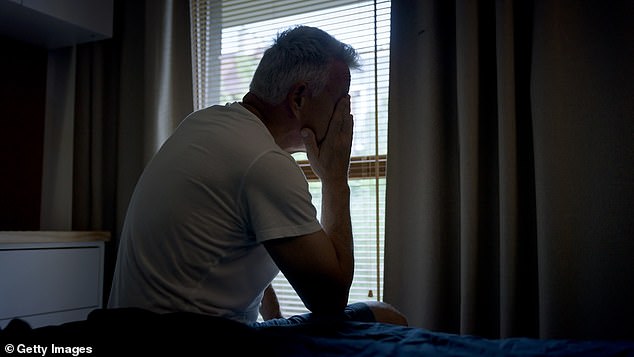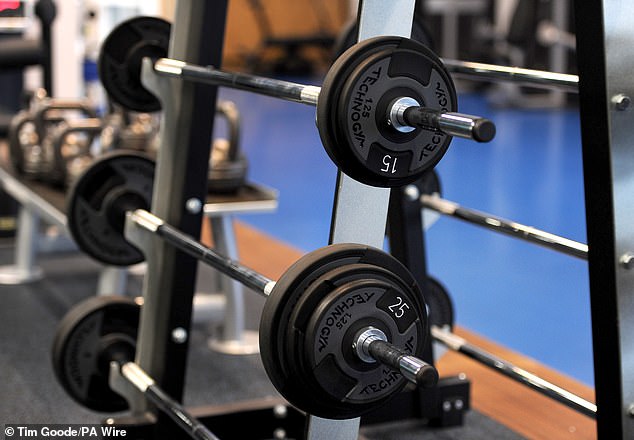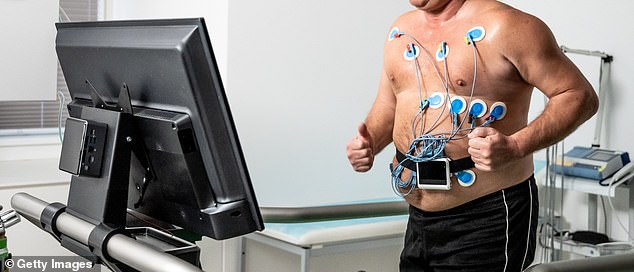Recent studies have uncovered a new method to combat insomnia in elderly individuals: weightlifting.
Sleep specialists suggest that strength training or resistance exercises like using dumbbells and barbells can significantly improve your capacity to drift off to sleep.
Various conventional types of workouts for senior citizens, including aerobic activities like fast-paced walking or Pilates, have been shown to provide advantages as well; however, these benefits tend to be less pronounced compared to those derived from strength training.
The research, initially featured in the Family Medicine and Community Health Journal, highlighted that insomnia becomes more common in older individuals due to the decline in sleep quality associated with aging.
Data from the research indicated that nearly half of older adults report feeling sleepy (approximately 48 percent), and up to one in five suffer from insomnia.
Fatigue is not the sole drawback, as the research also indicates connections between poor-quality sleep and various issues such as depression and anxiety.
Cognitive deterioration, cardiovascular disease and cancer There are additional concerns that cause an increase in risk factors among those who suffer from insomnia.
The researchers noted that earlier studies had already established that exercise can help with insomnia, though it remained unclear which specific types of exercise might be most effective.


The research encompassed evaluating 24 clinical studies involving more than 2,045 participants who were 60 years old or older.
The exercises examined in the studies encompassed various forms including: aerobic activities like cycling, dancing, swimming, fast-paced walking, and trekking; strength training involving weightlifting, arm curls, wall push-ups, and using resistance machines or gear; balance-focused movements such as side stepping, toe-heel walking, and single-legged stands; flexibility workouts like gymnastics, yoga, dance, and Pilates; along with combined routines that integrated multiple disciplines.
In every study reviewed, over fifty percent incorporated exercises ranging from mild to moderate or strictly moderate in intensity. Typically, each session spanned approximately 50 minutes, occurring about two to three times per week. Generally speaking, these exercise programs ran for an average duration of 14 weeks.
The findings indicated that when measured with a conventional scale for sleep and sleep quality, strength/resistance exercises were significantly more effective at reducing insomnia compared to other methods.
The assessment tool employed was the Pittsburgh Sleep Quality Index (PSQI), a straightforward questionnaire designed to evaluate sleep patterns.
Through this method, the detailed analysis revealed that engaging in strength/resistance exercises led to an improvement of 5.75 points in the GPSQI.
Aerobic workouts led to an improvement of 3.76 points in the GPQSI, whereas combined exercises resulted in a gain of 2.54 points.
The researchers at the Mahidol University Faculty of Medicine in Bangkok determined that "exercises focused on strengthening muscles, as opposed to aerobic or combined workouts, are more effective for improving sleep quality."

Huw Edwards, who leads ukactive—the trade organization for the physical activity industry in the UK—stated: "Physical activity significantly contributes to both our physical and mental well-being, offering advantages like enhanced sleep quality, decreased stress and anxiety levels, increased productivity, stronger social connections, and overall greater wellness."
This research highlights how resistance training can be crucial in addressing insomnia among elderly individuals. We understand that engaging in physical activity benefits both the quality of one’s sleep and their overall well-being, enhancing productivity on subsequent days thanks to improved rest.
Our findings indicate that improving sleep quality (66%) is a key reason why individuals engage in physical activity. Therefore, it’s crucial that everybody, regardless of their age, background, or capability, feels encouraged to incorporate physical exercise into their everyday routines.
We aim to transform the UK into the most physically active country in Europe, potentially reducing annual health care costs related to lack of exercise by up to £1 billion and boosting GDP by an extra £3.6 billion due to enhanced productivity.
Read more

No comments:
Post a Comment